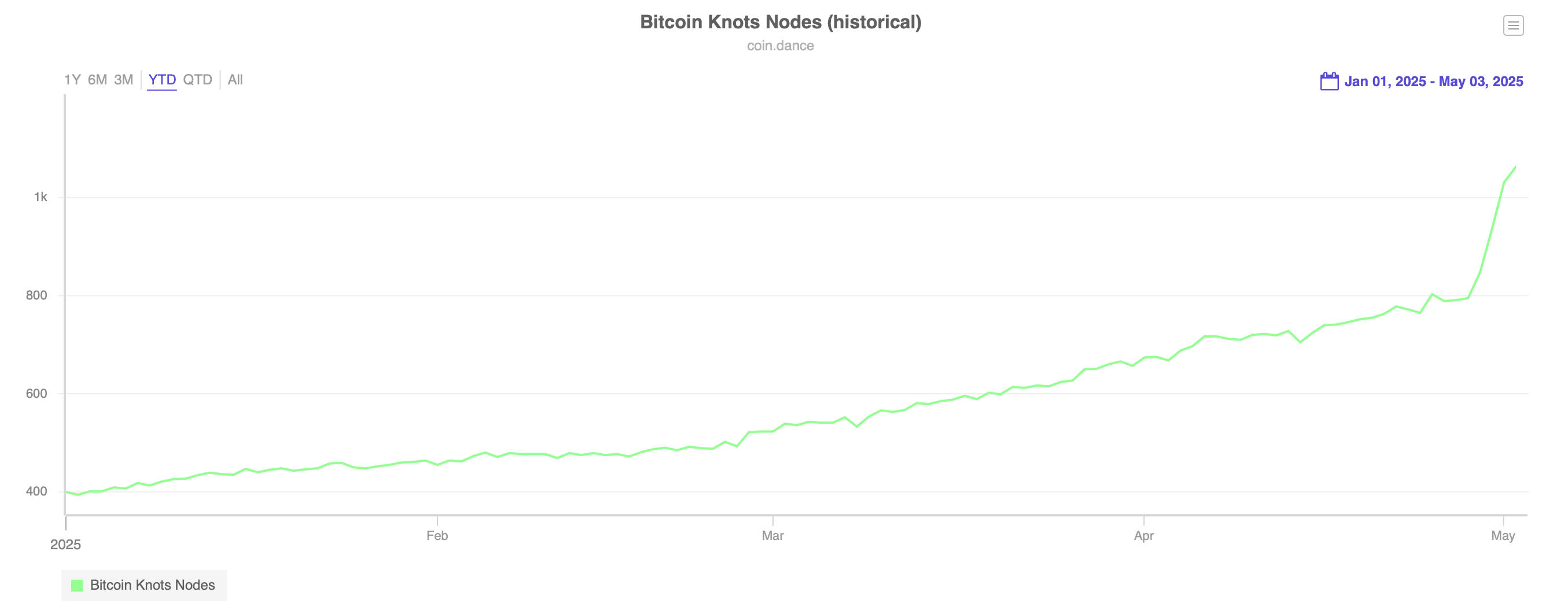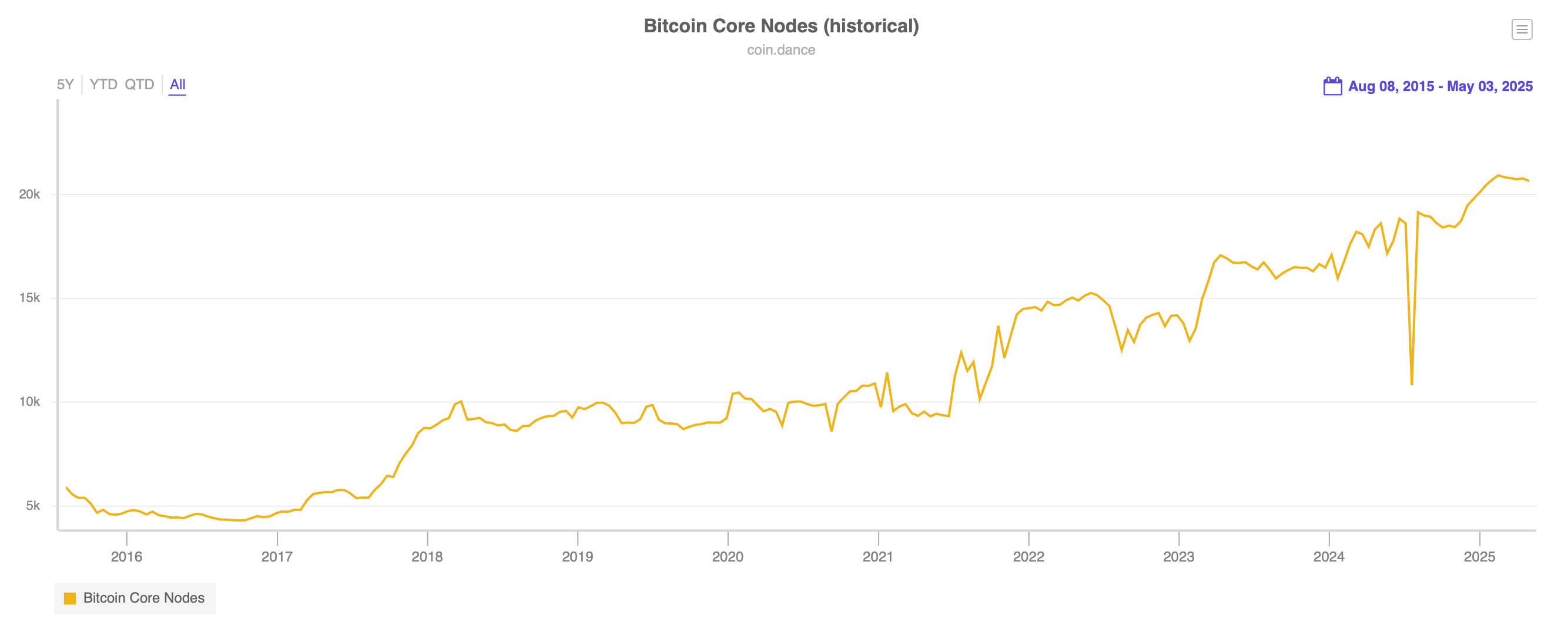The proposal, introduced by Peter Todd, aims to abolish the 80-byte restriction on OP_RETURN outputs—potentially enabling much larger datasets to be embedded directly into the Bitcoin blockchain. This has ignited considerable pushback from developers who view the change as antithetical to Bitcoin’s design ethos.
Advocates contend the existing cap is capricious, antiquated, and simple to sidestep. Indeed, Bitcoin Ordinal inscriptions and Runes have already threaded their way around the limit. Developer Luke Dashjr stands as a leading critic of abolishing the 80‑byte ceiling on OP_RETURN. He has labeled the plan “utter insanity,” framing it as a direct assault on the network.
Dashjr cautions that loosening data guardrails could flood the chain with spam. The dispute has fanned intense Github debates, claims of censorship, and a notable jump in Bitcoin Knots deployments in April. Knots is an alternative full‑node build carved from Bitcoin Core and tuned for granular control.

Compared with Bitcoin Core, Knots ships expanded features, additional patches, and finer mempool‑policy dials governing which transactions a node relays or archives. On April 1, 674 Knots nodes were visible, and today the tally has reached 1,006. Yet, even with this increase, Bitcoin Core remains the prevailing client.
As of 4 p.m. Eastern on Saturday, 20,213 public Bitcoin Core nodes were reachable. Out of 21,326 aggregate public nodes, Core accounts for 94.78%, while Knots claims roughly 4.72%. Should a Knots node refuse to relay what it deems spam—say, oversized OP_RETURN data—a Core node can still propagate those transactions so long as they satisfy Bitcoin’s consensus rules and Core’s mempool parameters.
Even if Knots emerged as the most dominant client and declined to relay consensus‑valid transactions such as large OP_RETURN payloads or Ordinals, Core nodes, aided by the remaining minority of peers and miners, could still shepherd those transfers to finality. Permissive mining policies running Core nodes would ultimately usher the transactions into blocks, although propagation might slow if Knots were dominant and controlled most relays.

Moreover, even under this theoretical scenario, Knots would not become “Bitcoin” by sheer node count; as long as both Knots and Core adhere to identical consensus rules, each represents Bitcoin. A client only ceases to align with Bitcoin when a hard fork rewrites those rules and the nodes, community, plus bitcoin miners decide on the longest, highest‑PoW chain as the authentic ledger. Thus, while Knots’ node tally is interesting, it remains insufficient to thwart data storage should the OP_RETURN cap be lifted.
免责声明:本文章仅代表作者个人观点,不代表本平台的立场和观点。本文章仅供信息分享,不构成对任何人的任何投资建议。用户与作者之间的任何争议,与本平台无关。如网页中刊载的文章或图片涉及侵权,请提供相关的权利证明和身份证明发送邮件到support@aicoin.com,本平台相关工作人员将会进行核查。




